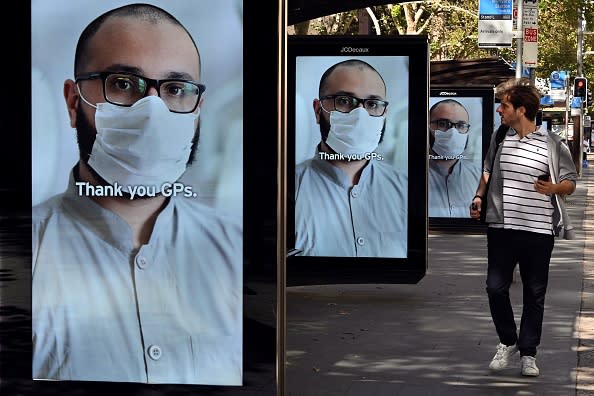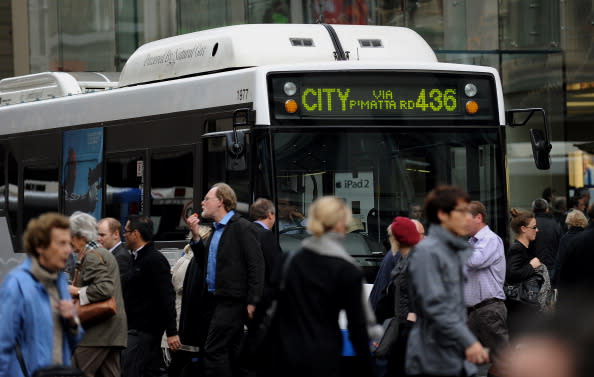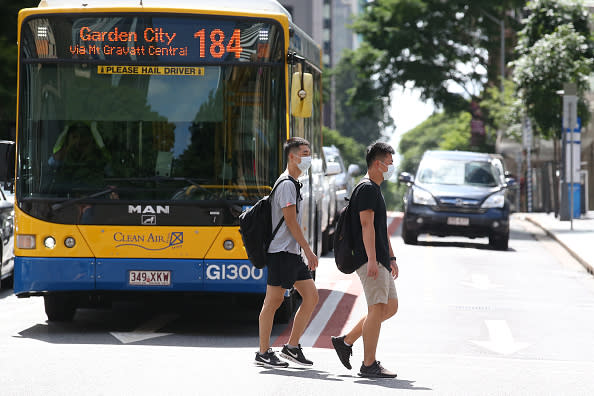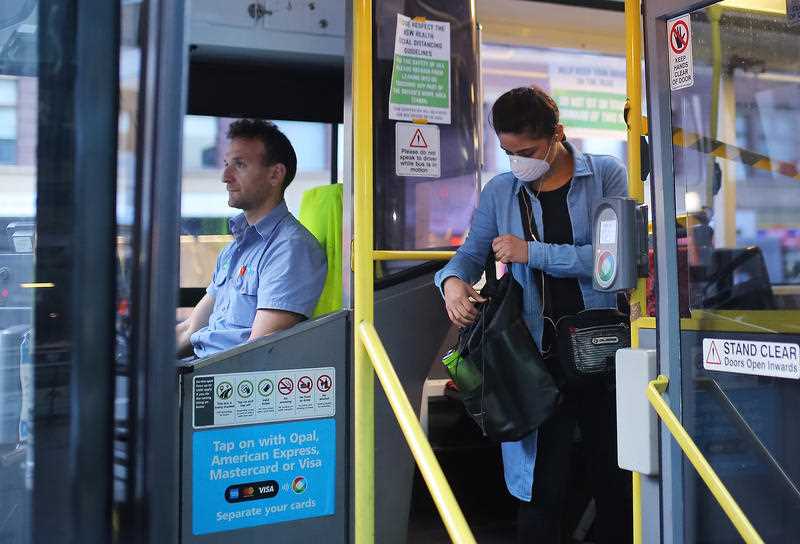'Think outside the box': How public transport will change as lockdowns are eased
Yahoo News Australia's Life After Lockdown series investigates what life will be like after coronavirus restrictions.
We’re being encouraged to forgo buses and trains in favour of walking and riding to work as coronavirus restrictions ease.
Prime Minister Scott Morrison told reporters this week he wants Australians going back to work and is moving towards easing restrictions.
But if restrictions are eased, what’s the morning commute going to look like?
Urban Transport and Public Health Professor Mark Stevenson, from the University of Melbourne, told Yahoo News Australia “we are going to need to think outside the box”.

One of the main issues facing public transport is proximity and if you live in Sydney, Melbourne or Brisbane, chances are you’re shoulder to shoulder with a stranger at peak hour.
Professor Stevenson, who’s forecasted the probability of COVID-19’s elimination in Australia, said physical distancing “needs to be maintained”.
“It means we have quite considerable requirements which our transport systems haven’t seen before,” he said.
“It’s certainly going to be a challenge.”
How the morning commute might change
Professor Stevenson said we’ll likely see fewer people on public transport and he believes that could come down to two factors.
“We need people using active methods of transportation such as cycling or walking,” he said.
“In Melbourne, we’ve introduced more bike paths and that will be a key to our transport system navigating COVID-19.”
University of Sydney transport analyst Professor David Levinson also believes people will walk or cycle to work.

“This means more space needs to be available for footpaths, and more protected and dedicated cycle lanes need to be deployed rapidly,” he said.
“This can be taken from the excessive space given over to cars, especially parked cars, now.”
As for catching taxis and rideshares to work, Professor Levinson believes this only alleviates issues for people who don’t already own cars “and that gets expensive pretty quickly”.

Professor Stevenson also believes people may choose to drive.
Issues might arise from parking, particularly in Sydney’s CBD, Professor Levinson said as there is “only a small and finite” number of spaces.
“If everyone were to go back to work at the same rates as pre-COVID, they could not all possibly drive. However, if work-at-home remains in place, say for half the workforce, then twice as many people could drive the CBD,” he said.
‘Staggering’ the return to the office
Professor Stevenson also suggested “staggering” returns to offices and schools meaning not everyone goes back at the same time.
“It’s so we don’t see this overburden our public transport,” he said.
“We could have schools start at different times. Maybe some services offer one or two days a week in the office while the rest work from home.”
Less people on public transport
Professor Stevenson said there is a chance we could go back to the crammed carriages and buses like we had before the pandemic but this would lead to more infections.
“We’ll see congested train carriages if nothing is done and if that happens it’s going to be very, very difficult to avoid transmission,” he said.
“What we’re going to need is much broader government discussion around this.
“We can’t have transport running at capacity.”

Rolling out more public transport - why it won’t work
Public transport is a “finite resource” but adding more buses on to our roads will simply lead to more congestion.
Professor Stevenson said it will also lead to more carbon emissions too.
“What we need is for people to say to their workplaces that they are more than capable of working from home,” he said.
“We don’t want more emissions and we don’t want congestion on our roads.
“This is something that really cannot be resolved by offering more transport options.”
Professor Levinson added congestion “tends to be self-limiting”
“As traffic increases, travel times rise, and as travel time rises demand (traffic) drops, so it finds a level,” he said.
“The equilibrium might be more congested than before the virus for a period if people are going back to work in high numbers but still transit averse, especially on bad weather days.
“But if the virus were effectively extinguished, I suspect transit ridership would go back to near normal levels, rather than stay at ghost town levels.”
He added he believes people will be working from home “at much higher levels post-COVID than pre-COVID” leading to “a lot less” travel.

Do you have a story tip? Email: newsroomau@yahoonews.com.
You can also follow us on Facebook, Instagram and Twitter and download the Yahoo News app from the App Store or Google Play.





